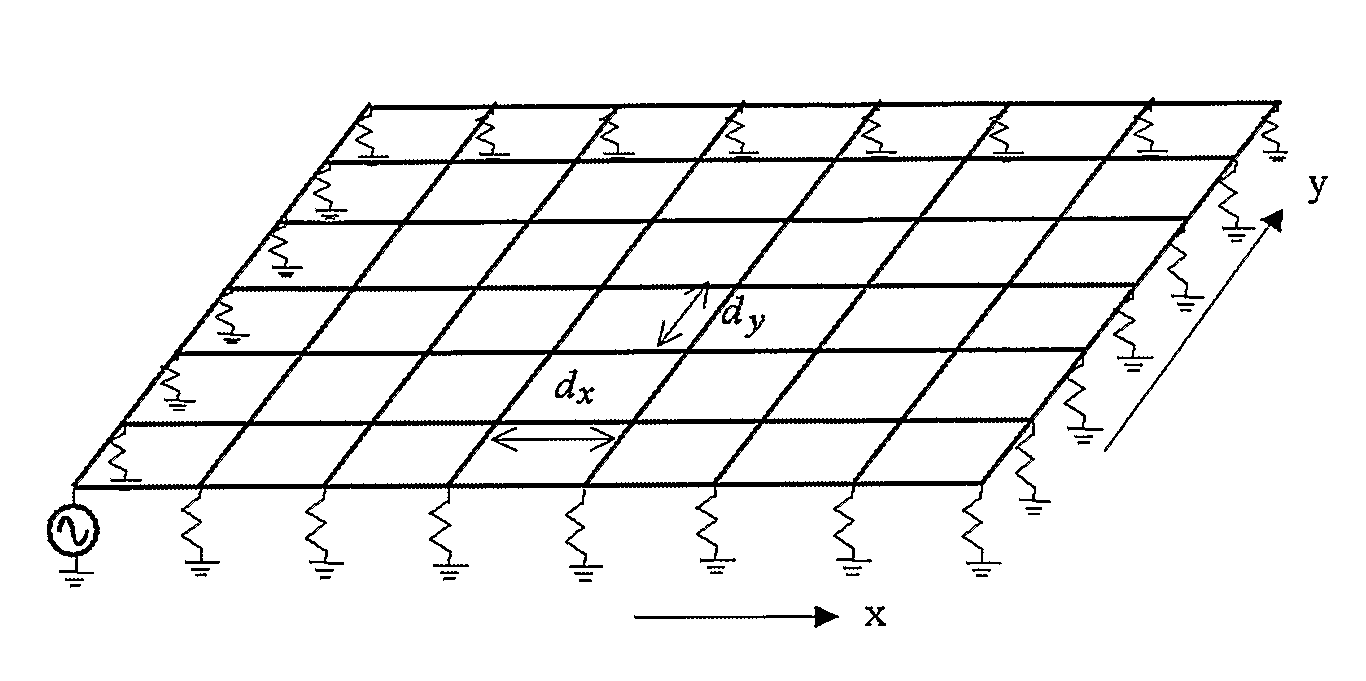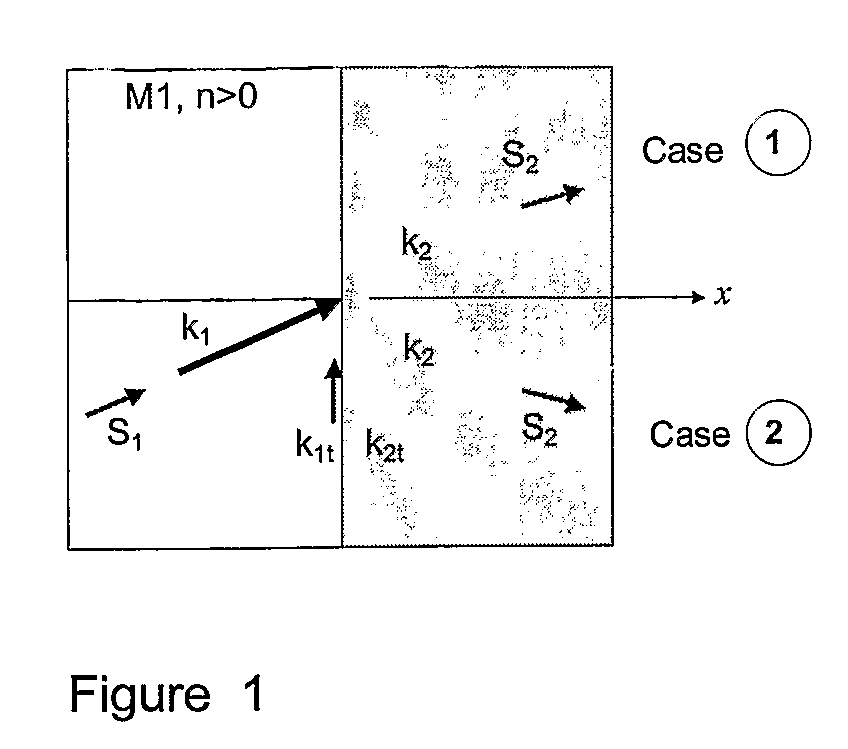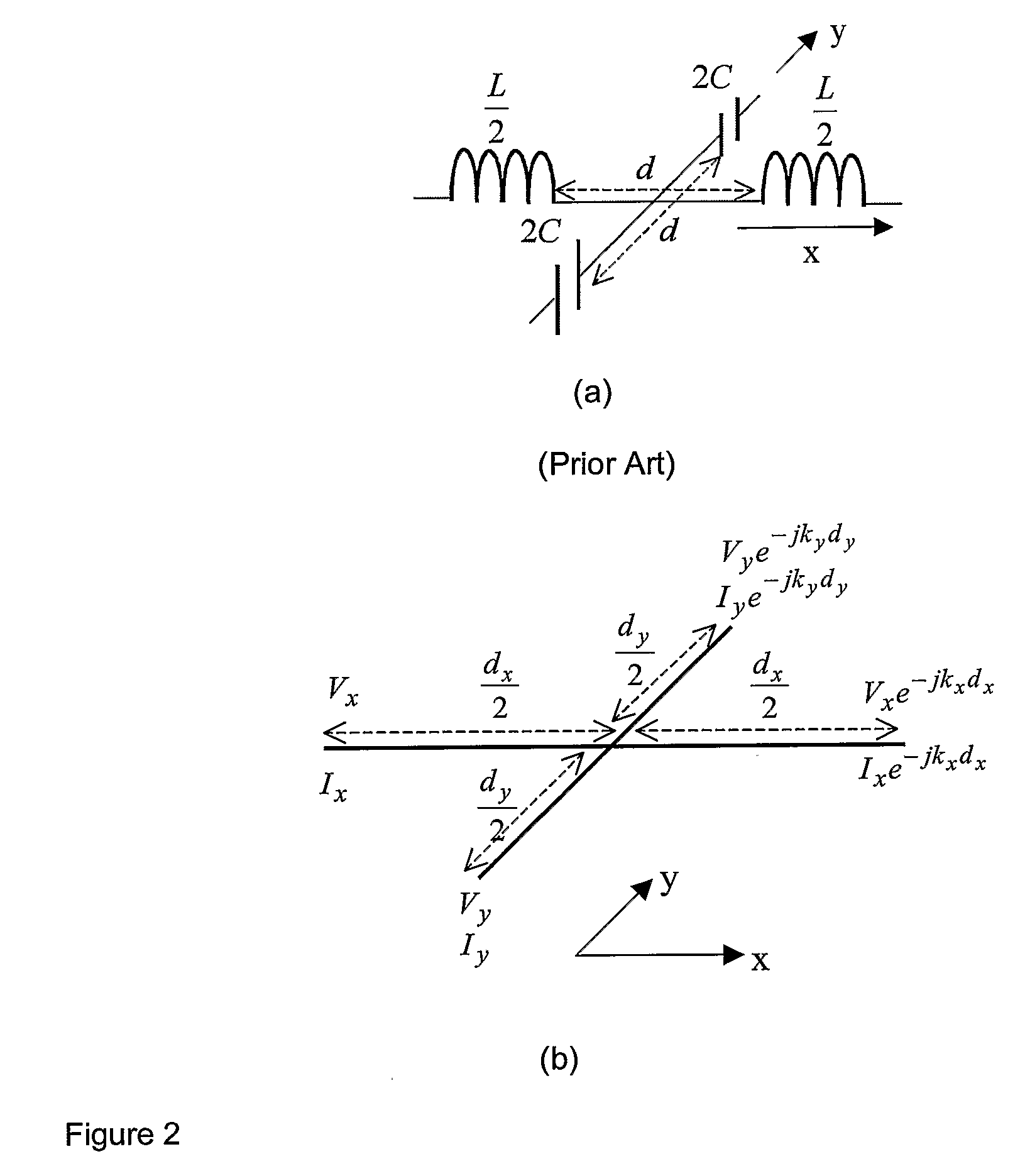Negative-Refraction Metamaterials Using Continuous Metallic Grids Over Ground for Controlling and Guiding Electromagnetic Radiation
a negative refraction and electromagnetic radiation technology, applied in the direction of waveguide devices, diffraction/refraction/reflection, impedence networks, etc., can solve the problems of limiting the useful operating bandwidth of the band, narrowband behaviour, and strong associated absorption losses, so as to achieve the effect of easy and less costly manufactur
- Summary
- Abstract
- Description
- Claims
- Application Information
AI Technical Summary
Benefits of technology
Problems solved by technology
Method used
Image
Examples
Embodiment Construction
[0042]The present invention relates generally to metamaterials that support negative refraction of electromagnetic waves. Such metamaterials inherently support two-dimensional (2D) wave propagation, which is desirable for antennas, antenna beam formers, planar spectrum analyzers, filters, compact radio frequency (RF) / microwave lenses and antennas, phase compensators, antenna-integrated multiplexers, near-field imaging and sensing devices, and other microwave circuit applications.
[0043]To illustrate the concept of negative refraction, consider phase-matching at the interface between a right-handed medium M1 and another generic medium M2, as shown in FIG. 1. The sign of the index of refraction of medium M2 is not a concern. Consider an incident plane wave in medium M1 with a wave vector k1 (i.e. such that the x-component of k1 is positive). A refracted wave with a wave vector k2 is then established in medium M2 such that the tangential wave vector components k1t and k2t are equal acro...
PUM
 Login to View More
Login to View More Abstract
Description
Claims
Application Information
 Login to View More
Login to View More - R&D
- Intellectual Property
- Life Sciences
- Materials
- Tech Scout
- Unparalleled Data Quality
- Higher Quality Content
- 60% Fewer Hallucinations
Browse by: Latest US Patents, China's latest patents, Technical Efficacy Thesaurus, Application Domain, Technology Topic, Popular Technical Reports.
© 2025 PatSnap. All rights reserved.Legal|Privacy policy|Modern Slavery Act Transparency Statement|Sitemap|About US| Contact US: help@patsnap.com



